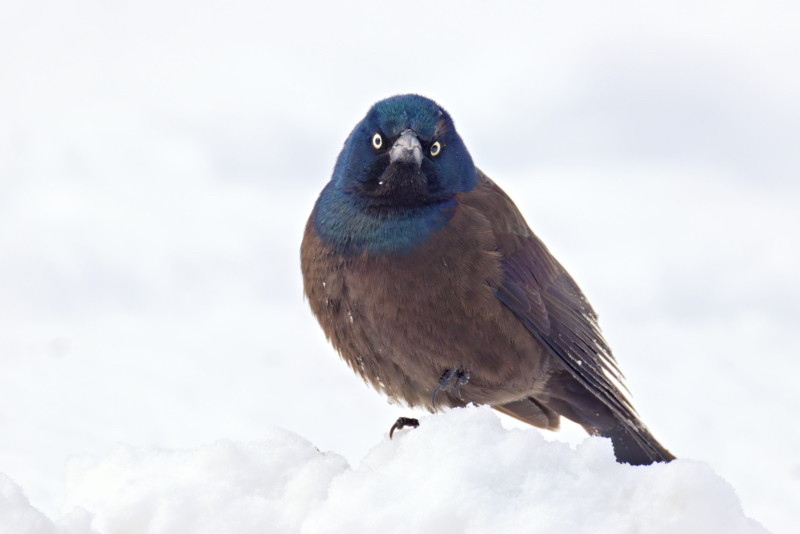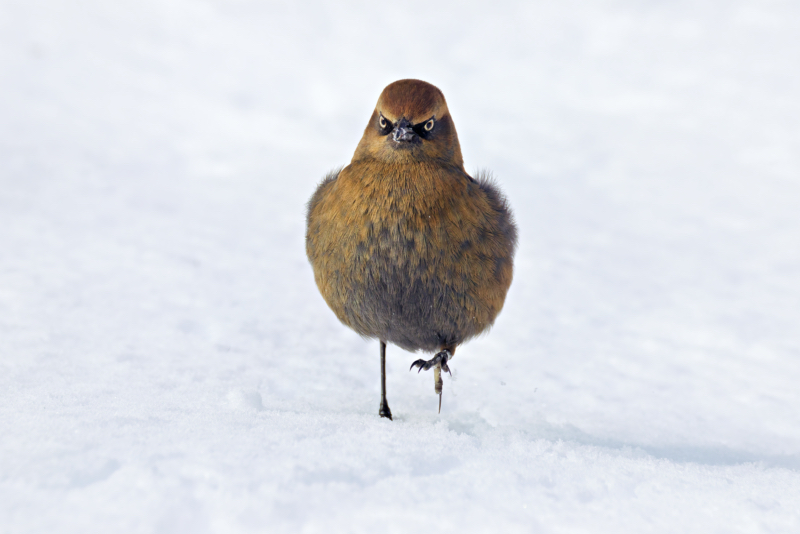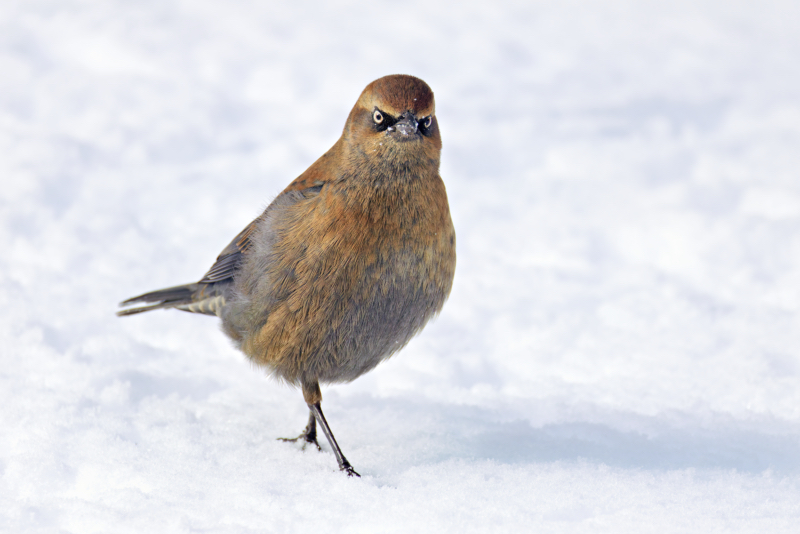Photographing birds in snow is an exhilarating challenge for nature photographers. The vibrant colors of birds against a snowy backdrop can create breathtaking images, but the conditions demand careful preparation and technique. This guide will help you master the art of capturing stunning bird photos in winter landscapes.

1. Dress Appropriately for Photographing Birds in Snow
Winter photography often means spending extended periods outdoors in freezing temperatures. Dress in layers to keep warm, and don’t forget insulated gloves that allow you to operate your camera. Comfortable winter boots and thermal socks are essential for standing on snow or ice for long durations.
2. Essential Equipment for Photographing Birds in Snow
- Camera and Lens: A DSLR or mirrorless camera paired with a telephoto lens (e.g., 300mm or more) is ideal for bird photography. The long focal length helps you capture detailed shots from a distance without disturbing the birds.
- Tripod: A sturdy tripod provides stability, especially when using slower shutter speeds in low-light conditions.
- Lens Hood: Use a lens hood to minimize glare from the snow and protect your lens from snowflakes.
3. Best Camera Settings for Photographing Birds in Snow
- Exposure Compensation: Snowy backgrounds can confuse your camera’s metering system, leading to underexposed shots. Set your exposure compensation to +1 or +2 stops to ensure the snow looks bright and white rather than dull gray.
- Shutter Speed: Use a fast shutter speed to freeze motion, especially for birds in flight. A minimum of 1/1000s is recommended for sharp images.
- ISO: Keep your ISO as low as possible to minimize noise, but don’t hesitate to increase it if lighting conditions demand it.
- Focus Mode: Use continuous autofocus (AI Servo or AF-C) to track moving birds effectively.
4. Ideal Times and Locations for Photographing Birds in Snow
Birds are most active during early morning and late afternoon. These times also offer softer, warmer light that enhances your photographs. Research local birding hotspots, such as nature reserves or parks, where birds are known to gather. Setting up near bird feeders in snowy landscapes can also yield excellent opportunities.

5. How to Compose Stunning Photos of Birds in Snow
- Contrast and Color: Use the stark contrast between the birds’ plumage and the white snow to your advantage. Brightly colored birds like cardinals, blue jays, and robins stand out beautifully against a snowy background.
- Rule of Thirds: Place the bird off-center in your frame to create a balanced and visually appealing composition.
- Include Context: Incorporate surrounding elements like snow-covered branches or berries to add depth and storytelling to your images.
6. Protecting Your Photography Gear for Snowy Bird Shoots
Snow and moisture can damage your equipment, so take precautions:
- Use a weather-sealed camera if possible.
- Carry lens wipes to clear away snowflakes or condensation.
- Store your camera in a padded bag with silica gel packets to absorb moisture.
7. Respecting Wildlife During Snowy Bird Photography
Bird photography requires patience. Allow birds to acclimate to your presence by moving slowly and quietly. Avoid disturbing their natural behaviors, especially during winter when energy conservation is crucial for their survival.
8. Post-Processing Tips for Photos of Birds in Snow
Editing can enhance the quality of your bird photos:
- Adjust brightness and contrast to emphasize details.
- Fine-tune white balance to ensure snow looks natural.
- Use noise reduction tools to clean up high-ISO images.
Conclusion
Photographing birds in snow presents unique challenges, but with the right preparation and techniques, you can capture magical moments that showcase the beauty of nature. Dress warmly, protect your gear, and take time to observe and appreciate your feathered subjects. With practice, your snowy bird photography can evolve into a portfolio of stunning winter wildlife shots.


Hi Steve,
Very interesting post.
Thank you for taking the time to write it.